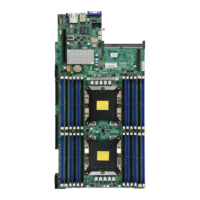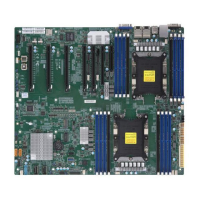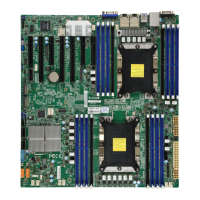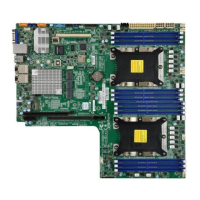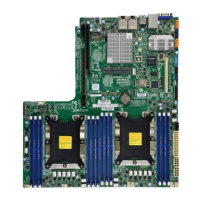13
Chapter 1: Introduction
Motherboard Features
BIOS
• 32 MB SPI AMI BIOS
®
SM Flash UEFI BIOS
• ACPI 3.0/4.0, USB keyboard, Plug-and-Play (PnP), SPI dual/quad speed support, riser-card auto detection support, and
SMBIOS 2.7 or later
Power Management
• Main switch override mechanism
• Power-on mode for AC power recovery
• Intel® Intelligent Power Node Manager 3.0 (available when the Supermicro Power Manager [SPM] is installed and a
special power supply is used. See the note on page 22.)
• Management Engine (ME)
System Health Monitoring
•
Onboard voltage monitoring for +3.3V, 3.3V standby, +5V, +5V standby, +12V, CPU core, memory, chipset, BMC, and PCH
• CPU System LED and control
• CPU Thermal Trip support
• Status monitor for speed control
• Status monitor for on/off control
• CPU Thermal Design Power (TDP) support of up to 205W (See Note 1 on next page.)
Fan Control
• Fan status monitoring via IPMI connections
• Dual cooling zone
• Multi fan speed control via onboard BMC
• Pulse Width Modulation (PWM) fan control
System Management
• Trusted Platform Module (TPM) support
• PECI (Platform Environment Control Interface) 2.0 support
• UID (Unit Identifi cation)/Remote UID
• System resource alert via SuperDoctor® 5
• SuperDoctor® 5, Watch Dog, NMI
• Chassis intrusion header and detection
LED Indicators
• CPU/Overheating
• Fan Failure
• UID/remote UID.
• LAN activity.
Dimensions
•
18.60" (L) x 6.80" (W) (472.44 mm x 172.72 mm)
Note 1: The CPU maximum thermal design power (TDP) is subject to chassis and
heatsink cooling restrictions. For proper thermal management, please check the chas-
sis and heatsink specifi cations for proper CPU TDP sizing.

